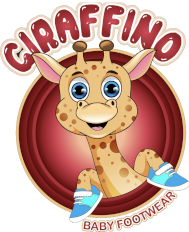
Baby Shoes - Guideline For Choosing Perfect Fit
Picking the right shoe size for a baby can be ridiculously difficult! Let’s be honest; the little darlings just never seem to stay the same size! One week they fit one size, and by the end of the week they’ve grown up two categories!
That’s why you should always try to find the right baby shoes sizes by age.
depending on your kid’s age, they won’t be able to give you a heads up whether or not the shoe feels good. Thankfully, there are a couple of key fit checks that you can do to be sure that your baby’s shoes are just right for their feet.
How to Check If Shoes Fits:
TOES: There is no quicker way to determine if there is enough wiggle room for your baby’s piggy toes than to give them a quick squeeze. You want to make sure that their toes are a half an inch or a quarter of an inch away from the front of the shoes, to give them lots of room to grow and to make sure their toes aren’t getting pinched.
TONGUE: The tongue of a shoe is the part that sits on the top, and helps to hold the shoe on your foot. Be sure to pull it out all the way when you are trying shoes on your baby, as the tongues tend to scrunch down, making for an uncomfortable fit. If the shoe fits properly, you should be able to get your finger down in between the tongue and your baby’s foot.
SOLE: baby shoes work best if they have a flexible grippy sole. This allows the to explore their world comfortably, all while developing the necessary muscles and balance they will need as they become more experienced walkers.
It is important to consider what kind of shoe you’ll need to match your baby’s developmental stage. Obviously, you’ll need to look for different key features in a shoe for a 3-month-old compared to shoes for a 2-year-old.
· 0-6 months – At this stage of their development, babies don’t do a whole lot of movin’ and groovin’. So, you won’t need a shoe that is designed to take too much of a beating. In fact, the softer, roomier, and more comfortable a shoe is, the better it will be for your baby’s feet during this period. Not that you couldn’t get a shoe with a hard sole. It won’t hurt their feet. Be sure to give them lots of room for their toes to wiggle, or it could hurt their development.
- 6-12 months – Since most babies are only crawling during this period, or at the very most, pulling themselves to stand, you want to make sure that the tongue and toes of the shoe are made well since they will be bearing the brunt of your baby’s movements. If your little one is more advanced, and already taking some steps, you might want to get a shoe with a tougher sole as well.
- 12-18 months – This is usually the age that your baby will begin taking their first steps.This also means that you should begin to purchase shoes that have a thicker sole to protect their little feet from the roughness of the ground. Keep allowing for plenty of wiggle room around the sides and toes, too, as your baby’s feet are still adjusting and developing to handle the rigors of walking as their main mode of transportation.
- 18-24 months – Now your little one is probably running all over the place. You should most definitely have a tougher sole on their shoes now, and it’s also a good idea for their shoes to have a tighter fit than before, to ensure that they don’t hurt themselves while they scurry about.
HOW TO MEASURE
Babies:
Take a measuring tape and hold it against the sole of your baby’s bare foot, starting from the heel. Hold it straight to the tip of their big toe and record the length – this is the approximate insole measurement.
Children:
Ask your child to stand barefoot on a page. Taking a pen mark on the paper where the back of the heel is. Repeat with the big toe, making sure your child stays still. When you are finished measure the distance between the two marks – this is the approximate insole measurement.

All comments